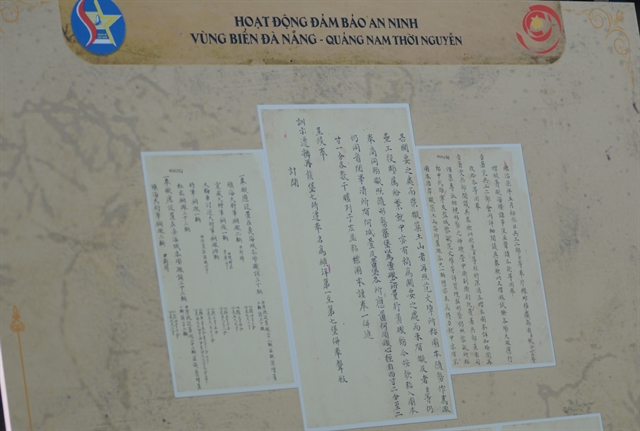
Visitors join an exhibition on royal records and wooden blocks from Nguyễn Dynasty at Đà Nẵng City's Hoàng Sa Museum. The event displayed a collection of 100 records and blocks that were recognised as UNESCO's heritages. — VNA/VNS Photos Võ Dũng
ĐÀ NẴNG — A remarkable exhibition featuring 100 valuable royal records and wooden blocks from the Nguyễn dynasty (1802-1945) has made its public debut at the Hoàng Sa Museum in the central city of Đà Nẵng.
This exhibition marks the first time these items have been displayed to the public.
Organised collaboratively by the city and the National Archives Centre 1, the exhibition, which is entitled "Đà Nẵng – From the Sea View", highlights the significant role played by the beach city in terms of the bay, port, and maritime service from the 16th to the 19th century as documented in the royal records.
These records and blocks have been recognised by UNESCO's Memory of the World Regional Register for Asia and the Pacific since 2017.
According to the Hoàng Sa (Paracel Islands) District authorities, this exhibition offers a unique opportunity to view the complete collection of these priceless items, providing a fascinating insight into the rich history of the Nguyễn Dynasty.
Đà Nẵng’s port emerged as a cargo transhipment wharf in the 16th century and then a main port during the 19th century.
A royal record given by King Ming Mạng during the Nguyễn Dynasty stated that all merchant ships from western and foreign countries were allowed to dock at Đà Nẵng’s estuary.
The exhibition also displayed a collection of ancient maps of Hoàng Sa (Paracel Islands) of Việt Nam.
Hoàng Sa Museum, on the coast of Sơn Trà Peninsula, Ðà Nẵng City, is a unique site preserving documents and other artefacts on Việt Nam’s sovereignty over the Hoàng Sa (Paracel) and Trường Sa (Spratly) archipelagos.

Royal records are on display at an exhibition in the central city of Đà Nẵng. The event will be open to the public until March 31.
The museum displays over 400 maps, documents and photos, of which 150 are ancient maps showing the country’s sovereignty over the two archipelagos from the 16th to 19th centuries.
Many old maps and atlases showed clear historical evidence that the Hoàng Sa and Trường Sa islands belong to Việt Nam.
The ancient books of Việt Nam, Toàn Tập Thiên Nam Tự Chí Lộ đồ thư (Route Maps from the Capital to Four Directions), drawn by Đỗ Bá in 1686, gave ample of evidence of Việt Nam's sovereignty over Hoàng Sa and Trường Sa islands.
The exhibition will last through March 31. — VNS
OVietnam